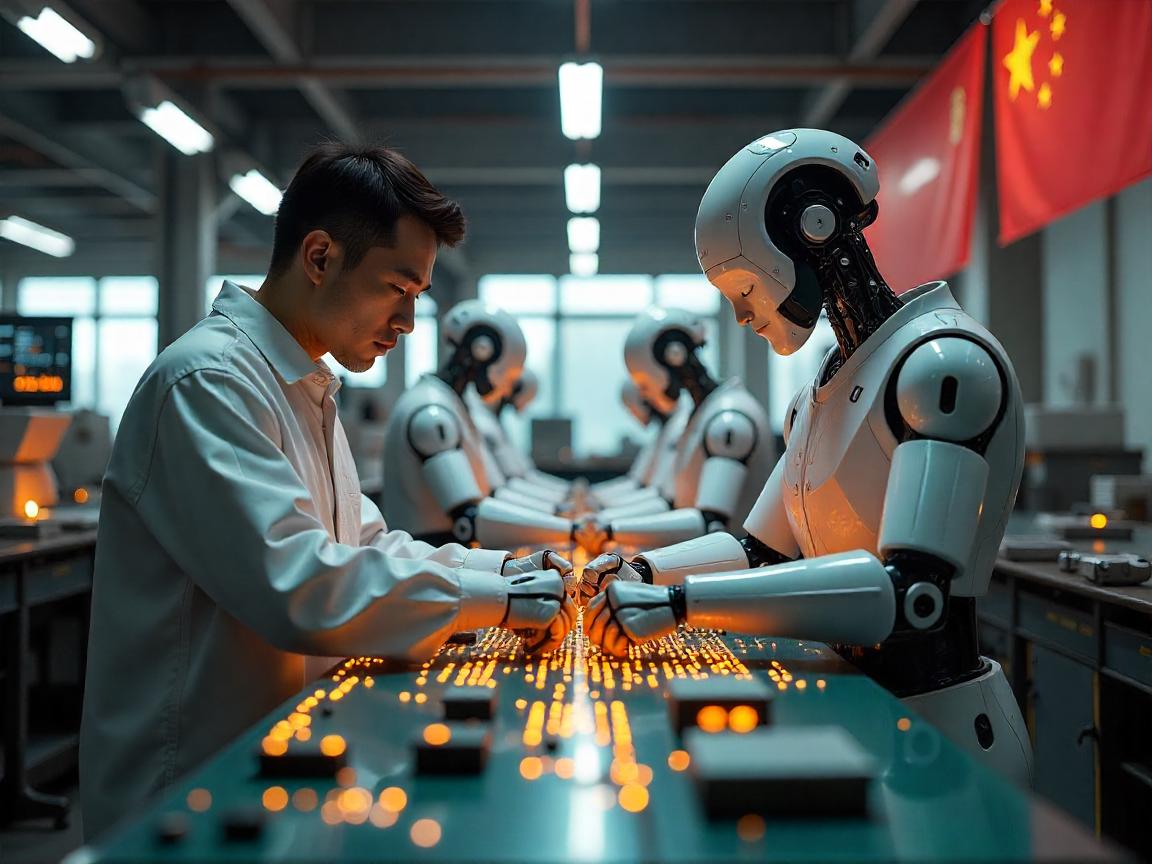
In a world where the economic piles are skyrocketing high, labor pools are shrinking and innovation is all race and no rhythm, China has decided to all-in with a $137 billion invests on humanoid Robots. Not your average robots, but AI enabled, bipedal machines designed to function on manufacturing lines (or as a replacement for humans). What sounds like a scene of a sci-fi movie, right? Except, it is happening around China’s industrial zones. The world’s factory is trying to rebrand itself by shoving not the backbone of its economy but, rather, its people out in favor of steel, silicon, and code.
Why now, and even more importantly, would it work? Let’s examine the implications of this high-stakes move, from data-rich industrial belts to a changing sentiment on Chinese assembly lines.
Why Humanoids, Why Now? A Strategic Reply to Shrinking Hands
China’s seemingly inexhaustible supply of cheap labor has been drying up at a fast pace in the last decade. From figures by the National Bureau of Statistics of China, the country lost almost 41 million working-age citizens within the past decade (2010 – 2020), and this is expected to increase in the next 15 years. Wages are increasing, in particular, in the provinces that are rich in exports such as Guangdong and Jiangsu, and now factory owners face both economic pressure and an aging workforce.
In order to remain competitive, Beijing isn’t just tinkering with policies, but overturning the whole industrial model. Earlier in the year, the Ministry of Industry and Information technology came out to spurt its aggressive agenda of deploying humanoid robots in manufacturing industries by 2027. This is not automation as it is traditionally used. The government is going for agile, AI-driven machines capable of walking, lifting, sorting, learning, and adapting – Wukong, a model by UBTech, which is tested out currently on real assembly lines.
This is not job filling. It’s about protecting the world manufacturing supremacy while creeping toward sustainable long-term production. Think of it as the next “Made in China 2025” reboot – but with robot arms.
From Factory Floors to Robotics Labs: Real Deployment Already Underway
The rollout isn’t theoretical. It’s going on now, quietly but meaningfully, throughout the tech-forward cities of China. In Shenzhen, UBTech Robotics’ humanoid robot “Wukong” isn’t just walking on its feet but also swhooshing its robot hands at more than 97% accuracy through hundreds of components per hour. In a market in which split-second efficiency determines margins, that precision is game changing.
On the other side, in Shanghai, the GR-1 humanoid of the company Fourier Intelligence is trialled in actual factory environments and recovery clinics. It walks at human pace, it can carry 20kg payloads and even manoeuvre stairs – a huge advance from its clunky prototype days. The South China Morning Post (April 2025) reports that the GR-1 deployment in a Qingdao electronics plant had increased overnight shift productivity by 22% upon the first three months in service.
At the same time, two robot-specific industrial zones, one in Suzhou and another one in Tianjin, began subsidizing the local robotics companies for mass production. It is a plain indication of the fact that China doesn’t want to just create robots but rather sell them in bulk.
The Upside, The Unseen, and The Unsettling
Let’s be clear: humanoid robotics are capable to solve real challenges.
- Higher precision in assembly of complex, specifically, electronics and optics,
- 24/7 operational capacity without overtime costs
- Deployment in such hostile environments where it is too threatening or boring for human workers
- Alleviating job-shortages at the remote areas or high-turnover areas.
However, for everything good there is an opposite unease. For instance, a Zhejiang-based textile plant saved 40% of labor costs after it was switched to semi-autonomous systems but also released nearly 300 workers (mostly older than 45 who had few re-skilling possibilities).
On the global stage, the fear is that China might flood the markets with robot-assembled goods, where the prices would be undercut via what the critics refer to as “algorithmic labour dumping”. And the European Commission is even already examining trade requisites on robot-aided manufacture imports as per a leaked brief published by Politico EU in late March 2025.
Insight from the Factory Floor: A Perspective from an Ever Changing Landscape
I interviewed recently a mid-sized auto parts manufacturer, Mr. Liu from Zhejiang Province. He told me bluntly:
I lose 30% of my workers after Chinese New Year. I’ve trained hundreds; they migrate to areas that are more lucrative in terms of payment or move inland. With robots I’m not concerned with turnover or sleep cycles”.
Mr Liu did, however, confess to something more sobering:
“I’ve got fewer people now. The noise is different. It is always bright, but the place seems… colder”.
Technology usually wins with a minute buzz, but humans often pay the price—though spreadsheets rarely record it.
Final Thought: Race to an Industrial Ecstasy or Industrial Identity Crisis?
Here’s the real question: Are we seeing China set the path for a future-proof industrial model, or a economy with capabilities to alienate its own people? The $137 billion gamble might make China the top dog in humanoid robotics, but it’s also a dangerous prototype of what happens if economics stretch past empathy.
I think the world is watching not just to see if China succeeds, but to ask whether this is the . Can industries ever change without dehumanizing the industries? And will robots be able to replace not our labor, but our intuition, adaptability, and instinct as well?
If this is the future of manufacturing, then we had better decide, who is programming it and for what reasons.
